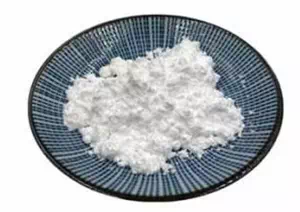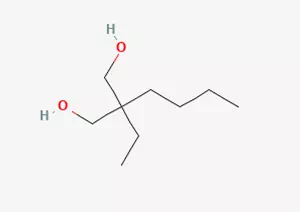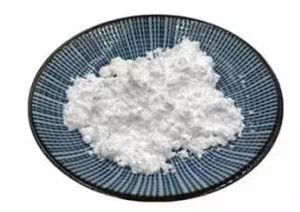All Categories



2-butyl-2-ethyl-1,3-propanediol CAS 115-84-4, 2-butyl-2-ethyl-1,3-propanediol, CAS 115-84-4
In the field of organic chemistry synthesis, an important compound - 2-butyl-2-ethyl-1, 3-propylene glycol, has a specific reaction pathway and conditions in its synthesis process. This compound is prepared through a series of elaborately designed chemical reaction steps.
CAS : 115-84-4
Formula : C9H20O2
Mol. wt. : 160.25
EINECS : 204-111-7
Chemical Name: | 2-Butyl-2-ethyl-1,3-propanediol |
Other Name: | BEPD; 2-N-BUTYL-2-ETHYL-1,3-PROPANEDIOL |
CAS: | 115-84-4 |
EINECS: | 204-111-7 |
Type: | Organic raw materials |
Molecular Formula: | C9H20O2 |
Molecular Weight: | 160.25 |

Melting point | 41-44 °C (lit.) |
Boiling point | 178 °C/50 mmHg (lit.) |
density | 0,93 g/cm3 |
refractive index | 1.4587 |
Fp | >230 °F |
solubility | almost transparency in Methanol |
pka | 14.54±0.10(Predicted) |
color | White to Almost white |

In the field of organic chemistry synthesis, an important compound - 2-butyl-2-ethyl-1, 3-propylene glycol, has a specific reaction pathway and conditions in its synthesis process. This compound is prepared through a series of elaborately designed chemical reaction steps.
Specifically, its synthesis begins with the interaction between formaldehyde and 2-methylpropanal, and in this process, at least one other 2-alkylaldehyde is also required to participate in the reaction. Throughout the entire reaction process, the presence of alkali plays a crucial catalytic role. Under the catalysis of alkali, aldehyde-alcohol condensation reactions occur among these raw materials, which is a crucial reaction step and lays the foundation for subsequent reactions.
After the aldehyde-alcohol condensation reaction is completed, the cross-Cannizzaro reaction will follow immediately. At this reaction stage, the molecular structure undergoes further changes and adjustments, and eventually 2, 2-dialkyl-1, 3-propylene glycol is successfully obtained, including the target product 2-butyl-2-ethyl-1, 3-propylene glycol that we are concerned about.
It is worth noting that the production process of 2-butyl-2-ethyl-1, 3-propylene glycol (BEPD) is not limited to a single route. On the one hand, it can be produced through a salt-free process, which specifically involves first conducting an aldehyde-alcohol addition reaction and then a hydrogenation operation. On the other hand, it can also be prepared through a combination of the hydroxymethylation reaction catalyzed by classic alkali metal hydroxides and the Cannizzaro-type disproportionation reaction of formaldehyde.
In the above-mentioned production process, there is a notable feature, that is, this reaction is highly exothermic and has an extremely fast reaction rate. To ensure that the reaction can proceed safely, stably and effectively, it is necessary to precisely regulate the reaction process by strictly controlling the addition rate of the base catalyst.
In addition, from the perspective of raw materials, the raw material 2-ethylhexal required for the production of 2-butyl-2-ethyl-1, 3-propanediol is itself produced through the aldol condensation reaction and selective hydrogenation steps of n-butyraldehyde. However, compared with the production situation of neopentyl glycol, the production method of this raw material has increased the production cost of BEPD to a certain extent, which has affected the economy and competitiveness of this compound in the market.
Among the numerous chemical engineering fields, there exists a series of chemical substances with specific functions, including lubricants, emulsifiers, insect repellents, and related substances used in plastic synthesis. These substances play an indispensable role in their respective application scenarios.
In the vast world of organic chemistry, there is a kind of alcohol organic compound that has attracted much attention, and it is 2-butyl-2-ethyl-1, 3-propylene glycol. This organic compound has unique chemical properties, enabling it to serve as an effective organic solvent. In many chemical reactions and industrial production processes, organic solvents play a crucial role. They can dissolve other substances, provide a suitable environment for chemical reactions, and facilitate the smooth progress of the reactions. 2-butyl-2-ethyl-1, 3-propylene glycol has become one of the indispensable organic solvents in many industrial fields due to its good solubility and chemical stability.
In addition, in the field of materials science, the application of additive flame retardants is also extremely extensive. Among them, there is such a specific flame retardant, which is mainly used in PBT and ABS/PC polymer alloys. PBT and ABS/PC polymer alloys hold an important position in modern industry and are widely used in numerous fields such as electronics, automobiles, and home appliances. The emergence of this flame retardant has provided strong support for the performance improvement of these polymer alloys.
This flame retardant has many remarkable advantages. First of all, it has a good melt flow rate. In the process of polymer processing, the melt flow rate is a key parameter, which directly affects the molding processing performance of the material. The excellent melt flow rate enables this flame retardant to be better compatible with the polymer matrix without affecting the original properties of the polymer alloy, and to be uniformly dispersed in the material system, thereby ensuring the fluidity and formability of the material during the processing.
Secondly, this flame retardant also has a high flame retardant efficiency. In today's society, as people's demands for fire safety and the flame retardant performance of materials are constantly increasing, flame retardants with high flame retardant efficiency have become an urgent need in the market. This flame retardant can effectively enhance the flame retardant performance of polymer alloys at a relatively low addition amount, reduce the fire hazard of materials during combustion, and provide reliable protection for people's lives and property.
* Prompt reply and 24 hours online, professional team to provide best price and high quality product.
* Sample testing support.
* Every batch of products will be tested to ensureits quality.
*The packing also can be according the customers` requirment.
*Any inquiries will be replied within 24 hours.
*we provide Commerical Invoice, Packing List, Bill of loading, COA , Health certificate and Origin certificate. If your markets have any special requirements, let us know.